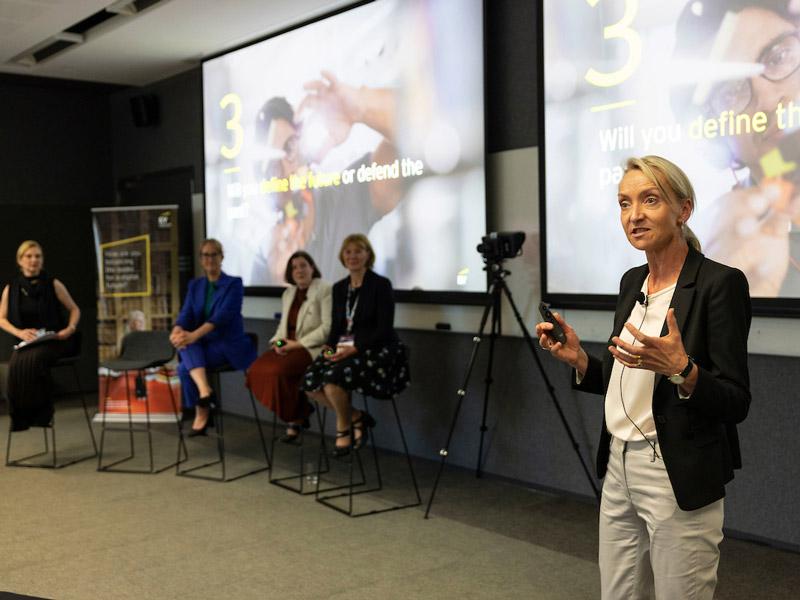
How university leaders can bring people along on the AI transformation journey

Words by Juliet Andrews, director in people services at EY Australia
Universities are seizing the power of generative AI to bring about once-in-a-generation transformations. Exciting new AI-powered tools are helping institutions to overcome legacy structures and processes – and deliver a seismic change in the experiences of staff and students.
But AI transformation is different from a traditional technology change programme. In old-world tech transformation, the process was largely linear, predictable and controlled. We knew the steps to be taken and we told users when they could have access to the tools.
AI is moving forward at such a dizzying speed that it’s hard to predict what large language models (LLMs) and other AI will be capable of in 12 months’ time. Also, AI tools are already in people’s hands. Since December 2022, university staff and students have had free access to LLMs like ChatGPT with revolutionary functionality.
The unpredictability that generative AI introduces and its extraordinary scope to revolutionise universities mean the size and speed of change can be overwhelming. While we may not be able to dictate the pace of change, we can influence how it transforms our universities by keeping their focus on the humans at the centre of AI-enabled transformations.
Six ways to put people at the centre of your AI transformation:
Research by EY teams and the University of Oxford’s Saїd Business School found that giving specific focus to six human factors can increase the probability of transformation success to more than 70 per cent. In the context of AI transformation, these factors are:
Inspire – create a vision everyone can believe in
Generative AI offers real and exciting benefits, but it also comes with uncertainty and the disruptive prospect of ongoing change. Your vision needs to be compelling but also pragmatic, engaging with what will change and when, and how people will be supported.
Lead – adapt and nurture the necessary digital leadership skills
As a leader you don’t need to be a generative AI expert, but you do need a reasonable understanding of the technologies and their opportunities and risks – and have trusted experts on call.
Care – build a culture that embraces and encourages everyone’s opinion
Universities get the most from AI tools when people are excited to use them. But that only happens when development involves everyone. The priority is to foster a psychologically safe environment where people feel safe to speak up about how they are experiencing change, knowing they will be heard.
Empower – set clear responsibilities and be prepared for change
AI is new and changing all the time so it requires an environment where it is safe to experiment and take risks. That means delegating authority as far you can while maintaining effective controls. Set clear expectations while encouraging teams to experiment with tools in their work.
Build – purposefully embrace AI technology
People need to be encouraged and upskilled to apply new technologies as quickly as possible so they understand the positive application of the technology in their work. LLMs don’t work like search engines. People can, and must, quickly learn how to prompt them.
Collaborate – create radical interdependence across university silos
Like any transformation, AI delivers rapid value when it happens horizontally – not in silos. Setting up a centralised way to oversee AI experiments, including collaboration tools where people can share their experiences, will help create a university-wide understanding of what’s possible.
The main task for leaders is to keep people engaged in the process of introducing AI tools, to support them at the centre of change and willingly step into the unknown.
Find out more about EY’s education services here.

